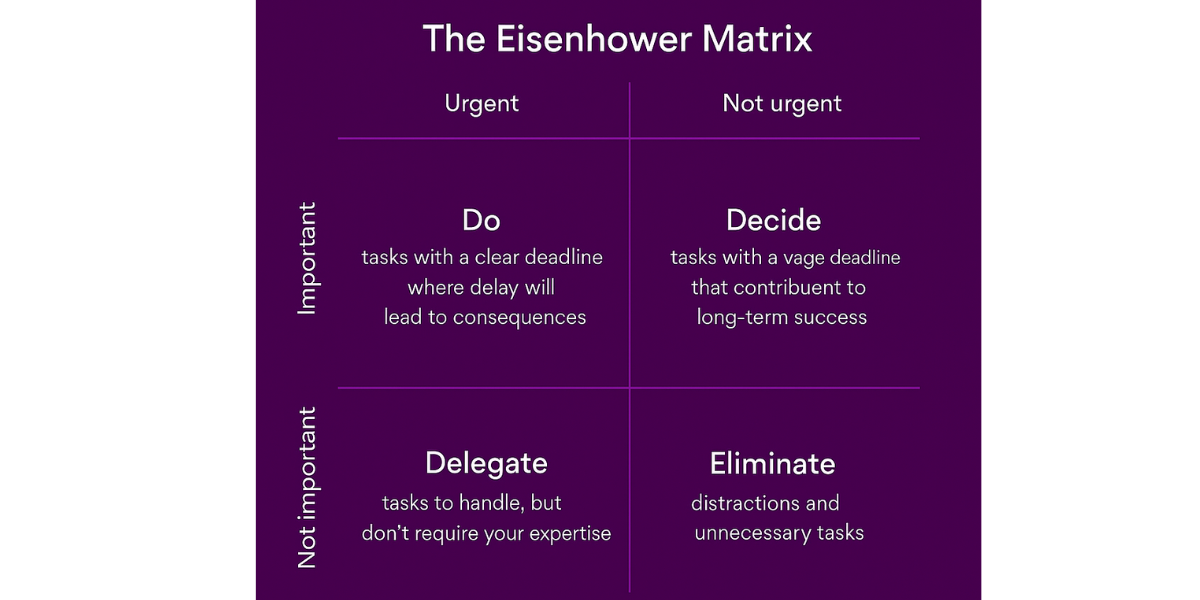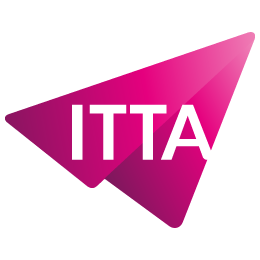Home > The 6 Mistakes That Kill Your Productivity
Do you end your days feeling like you’ve been running around without really getting anything done? You’re not alone. According to the OFCE, productivity dropped by 3.6% in just three years between 2019 and 2022. The paradox is striking: we have more tools than ever to stay organized, yet our professional efficiency keeps declining. The truth? It’s not unexpected events or mistakes that hurt your productivity the most it’s the silent habits you repeat every day without noticing. In this article, we’ll reveal the 6 most destructive mistakes that kill your time management and your ability to focus on your true priorities.

Here’s an uncomfortable truth: multitasking doesn’t exist. Your brain cannot handle two complex tasks at once. What you call “multitasking” is actually rapid switching between activities. And every switch comes at a cost.
According to a study cited by AB Solutions Admin, your brain constantly switches tasks, which increases your fatigue and stress by 50% while multiplying your mistakes. In practice, when you’re writing a report while checking your emails, you lose up to 40% of your efficiency. Even worse: it takes an average of 23 minutes to regain full focus after an interruption.
The solution? Embrace single-tasking. The Pomodoro technique, developed by Francesco Cirillo, encourages working in focused 25-minute blocks followed by 5-minute breaks. As Comundi explains, this method significantly improves concentration. Turn off notifications, close unnecessary tabs, and schedule periods of deep work where no one can interrupt you. Your productivity will thank you.

Do you know President Eisenhower’s famous quote? “What is important is seldom urgent, and what is urgent is seldom important.” That’s the real issue: we constantly confuse urgency with importance, spending our time putting out fires instead of building our professional future.
According to Réussir son Management, an overload of poorly prioritized tasks causes stress and decreases efficiency. The solution? The well-known Eisenhower Matrix. This tool classifies tasks along two axes: urgent/not urgent and important/not important.
How can you use it daily? Each morning, identify your top three priorities for the day. Place them in the “Important and Urgent” quadrant if necessary, but focus mainly on the “Important but Not Urgent” one that’s where your strategic projects, skill development, and planning live. As Manager-Go points out, this method helps you take a step back and focus on high-value tasks.
Tasks that are urgent but not important? Delegate them. Tasks that are neither urgent nor important? Eliminate them altogether. This simple discipline can radically transform your effectiveness.

Does your desk look like a battlefield? Papers scattered everywhere, 15 tabs open, notifications flashing? You’re unknowingly sabotaging your productivity. Mess isn’t just an aesthetic issue, it has a measurable impact on your focus and stress levels.
Research cited by Méthode TMA shows that a poorly organized environment causes confusion and significantly harms productivity. Every visible item on your desk demands a bit of your attention. Even subconsciously, your brain constantly scans its surroundings, creating a “mental tax” that drains your cognitive resources.
And what about notifications? Between emails, Slack, Teams, and your phone, you receive an average of 150 notifications per day. Each one is a micro-interruption that fragments your attention. According to Temps-Action, these constant distractions make deep concentration nearly impossible.
What can you do? Start with a major cleanup. Apply the simple rule: “a place for everything.” Turn off all nonessential notifications. Schedule specific times to check your emails (no more than three times a day). Invest in noise-canceling headphones if you work in an open space. These small changes can save you up to one full hour of pure productivity each day.

Here’s a mistake almost everyone makes: managing their time without managing their energy. You may have eight hours available in your day, but if you’re exhausted, those hours are worthless.
Do you work for hours without taking breaks? Big mistake. A study mentioned by Blog Gestion de Projet shows that your efficiency drops by 40% after 90 minutes of continuous work. Your brain operates in natural 90-minute cycles (the ultradian rhythm) and needs recovery periods to stay effective.
Breaks aren’t a waste of time, they’re an investment in productivity. Take a 5-minute break every hour, a real 45-minute lunch break, and even a 10-minute power nap in the afternoon. These recovery moments allow your brain to consolidate information and recharge your mental batteries.
Another crucial factor: your biological rhythm. Are you a morning person or a night owl? Identify your performance peaks and schedule your most complex tasks during those times. Reserve simple administrative tasks for low-energy moments. This simple strategy can boost your efficiency by 20 to 30% without working a single extra minute.

How many times have you agreed to a pointless meeting out of politeness? How many times have you said yes to an extra project when you were already overloaded? The inability to say no is one of the costliest mistakes in time management.
Not knowing how to say no causes you more trouble than learning to do it. Every time you say yes to something unimportant, you’re saying no to your real priorities. The vicious circle begins: overload, stress, saying yes out of guilt, and even more overload.
Meetings are the perfect example. A 2018 Wisembly study revealed that executives spend an average of 27 days per year in meetings. How many of those are truly necessary? Before accepting, ask yourself three questions: What’s the specific goal? Is my presence essential? Is there an alternative?
Learning to say no also means setting boundaries. Define your uninterrupted focus periods. Clearly communicate your email response times. Dare to decline projects that don’t align with your priorities. The magic phrase? “I can’t right now because I’m focusing on [current priority]. I can take care of it [later date] if it’s still relevant.” Assertive, yet respectful.

Do you start your day without a clear plan, thinking you’ll just see what happens? Do you operate in “firefighter mode,” constantly putting out fires? Congratulations, you’ve just discovered why you’re always overwhelmed.
Reactive mode is exhausting and inefficient. Without planning, you let other people’s emergencies dictate your schedule. You react instead of act. The problem? As Appvizer explains, effective time management allows you to focus on important matters, not just urgent ones.
The solution lies in a simple ritual: 10 minutes of planning can save you 1 hour of productivity. Every Sunday evening or Monday morning, take 30 minutes to plan your week. Define up to three key goals. Block deep work sessions in your calendar for important projects. Leave a 20% buffer for unexpected events.
Each evening before leaving work, take 10 minutes to prepare for the next day. Identify your three top tasks (no more!). Mentally prepare for your day. This small ritual transforms your mornings — instead of wasting 30 minutes wondering where to start, you jump straight into your most important task.
Use the Time Blocking technique: instead of letting your day fill up randomly, block themed time slots. For example: 9–11 a.m. for deep work, 11–12 for emails and admin, 2–4 p.m. for meetings. This structure gives your day a clear framework while keeping it flexible.

These six mistakes have one thing in common: they’re invisible. You repeat them every day without realizing it, thinking it’s “normal” to end your day exhausted without making real progress on what truly matters. But now that you know them, you have the power to fix them.
The good news? You don’t need to change everything at once. Start with just one mistake this week. Eliminate multitasking, or learn to prioritize using the Eisenhower Matrix, or establish your evening planning ritual. Then, add another improvement the following week. These small, consistent changes will radically transform your professional efficiency.
Remember: productivity isn’t about working more, it’s about working smarter. By correcting these mistakes, you’ll not only become more effective at work. You’ll also reclaim personal time, reduce stress, and achieve a better work-life balance. So, which mistake will you fix first?

How can I tell which mistake I make most often?
Keep a journal for one week and note how you spend your time. Observe moments of frustration and fatigue. Are you constantly interrupted? Do you jump from one task to another? Do you end your day without touching your key projects? These observations will reveal which mistake is most sabotaging your efficiency.
How long does it take to see real results?
It depends on the mistake you’re addressing, but in general, you’ll notice a difference within the first week. For multitasking, for example, blocking two hours of pure focus each morning will immediately boost your productivity. To solidify a new habit, expect about 21 days of consistent practice.
What if my work environment is imposed (like an open space)?
Even in an open space, you can optimize your environment. Use noise-canceling headphones to isolate yourself. Visually signal your availability (a “focused” sign). Negotiate remote work periods with your manager for complex tasks. Arrive earlier or stay later to enjoy quieter moments. Adapt rather than endure.
How can I say no to my boss without risking my career?
The key is to never just say “no,” but to offer an alternative. For example: “I can take on this project, but that will impact project X. Which one should take priority?” Or: “I can do it, but not before Thursday. Would that work?” This approach shows professionalism and awareness of your workload.
Does the Pomodoro Technique really work for every job?
The Pomodoro Technique is especially effective for intellectual and creative work that requires focus. If your job involves frequent interruptions (like customer service or emergencies), adapt it: try 45-minute blocks instead of 25, or use it for planning and analysis tasks. The key is the principle — working in focused bursts with regular breaks.

ITTA is the leader in IT training and project management solutions and services in French-speaking Switzerland.
Our latest posts
Subscribe to the newsletter

Nous utilisons des cookies afin de vous garantir une expérience de navigation fluide, agréable et entièrement sécurisée sur notre site. Ces cookies nous permettent d’analyser et d’améliorer nos services en continu, afin de mieux répondre à vos attentes.
Monday to Friday
8:30 AM to 6:00 PM
Tel. 058 307 73 00
ITTA
Route des jeunes 35
1227 Carouge, Suisse
Monday to Friday, from 8:30 am to 06:00 pm.